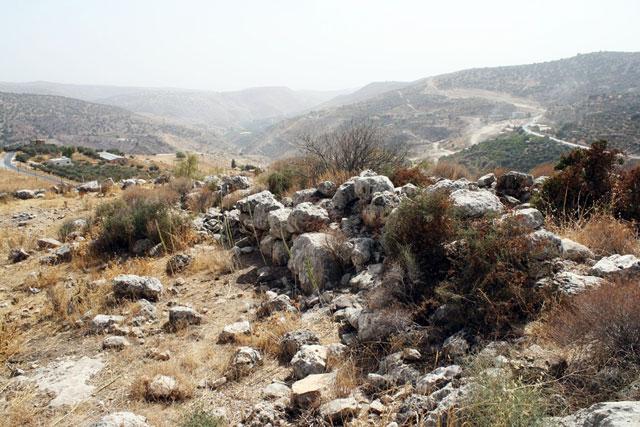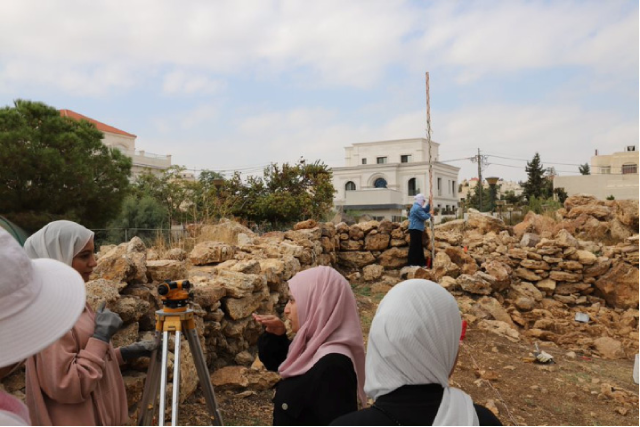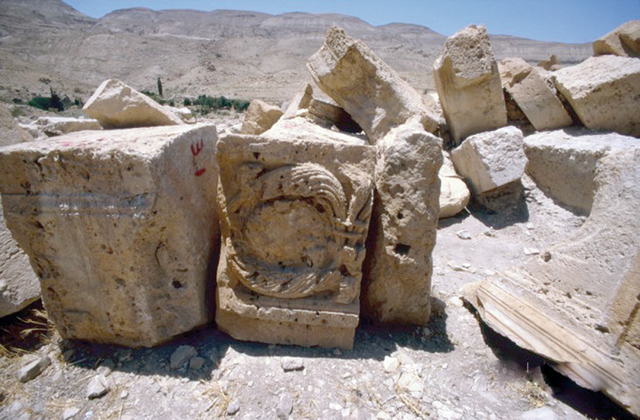You are here
Presentation delves into physical, virtual protection of microsites in Jordan
By Saeb Rawashdeh - May 30,2023 - Last updated at May 30,2023

Aerial view of Khirbet Salameh farmstead which dates to Hellenistic period, located in Tla Al Ali (Photo courtesy of Steve Meyer)
AMMAN — Jordan has lost many microsites over the past 20 years due to a lack of protection and urban expansion, said Jihad Haroun from the American Centre of Research (ACOR).
Speaking during a presentation titled “Augmented Reality Project: Khirbet Salameh, an Agricultural Settlement Founded Around the 3rd Century BC”, Haroun said that protection can be both physical and virtual.
Located by ACOR, Khirbet Salameh was a 24 metre by 24 metre farmstead excavated in 1992, and after three seasons, it was abandoned despite the site’s location in the middle of the vibrant Tla Al Ali borough.
Due to increased urbanism, Khirbet Salameh is under pressure, noted Haroun during the session “Linking Archaeology to other fields” held last week in Amman.
“In the Hellenistic, Roman and Byzantine periods, people used to live on farmsteads,” Haroun said, adding that Khirbet Salameh was a fortified structure.
Haroun explained that the main phases of the project are physical intervention, data collection, field documentation, data analysis, 3D modelling and an interpretation panel.
“The team also found an old spring that ran from the top of Tla Al Ali to the modern-day University of Jordan,” Haroun said, noting that raising awareness of the local community about Khirbet Salameh would be crucial for protecting the farmstead.
“Such farmsteads existed in Jordan in the 1940s, where horses, sheep and goats were kept in the courtyard,” Haroun continued.
Haroun also noted the importance of authenticity in reconstructing a site, adding that virtual and augmented realities are used in the process.
The first phase consisted site cleaning, buttressing fragile areas, covering deep holes and recording/visualising the site in its current condition.
The second phase included building a stone wall along the eastern exposed cliff side to protect it from any geological instability, in addition to building a proper staircase with handrails to protect visitors.
“This project can be duplicated at other sites,” Haroun said, adding that the sites could be used for educational purposes.
Related Articles
AMMAN — Khirbet Jazzir, some four kilometres southwest from Salt, was mentioned in scholarly literature as biblical site Jazer, according to
AMMAN — Motivated by Jordan’s rich cultural heritage, the American Centre of Research (ACOR) and Jordan’s Department of Antiquities (DoA) pa
AMMAN — The professor of Pantheon-Sorbonne, Francois Villeneuve, has worked for decades in the region and some of his project included the N














